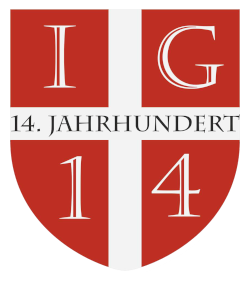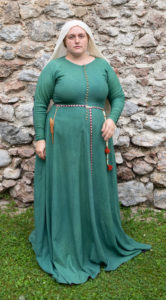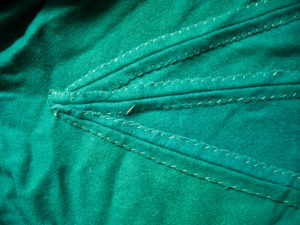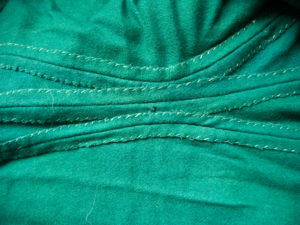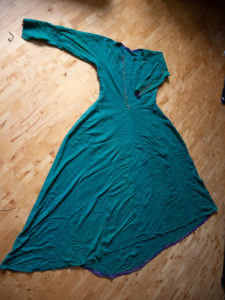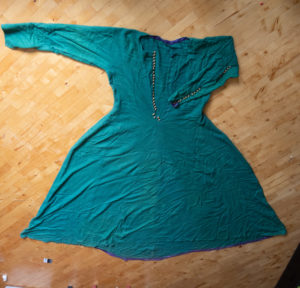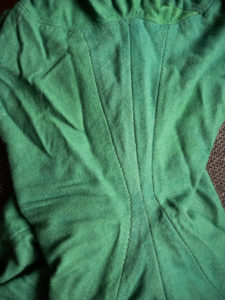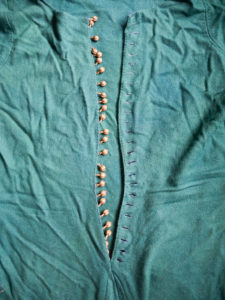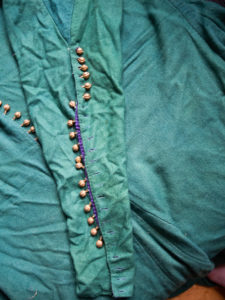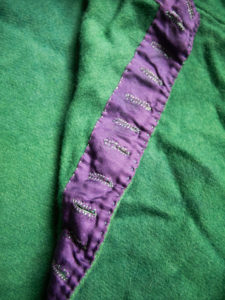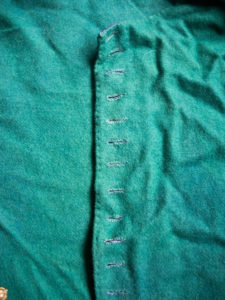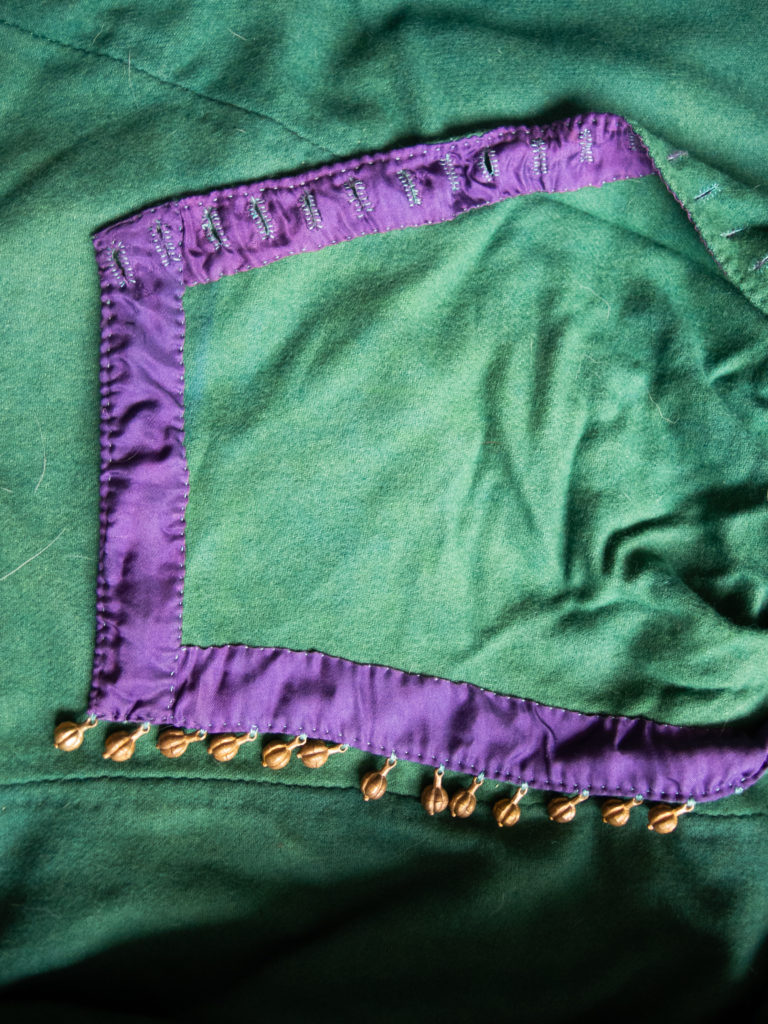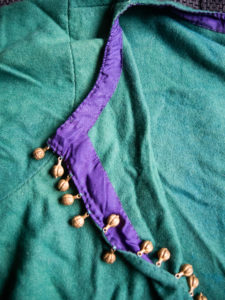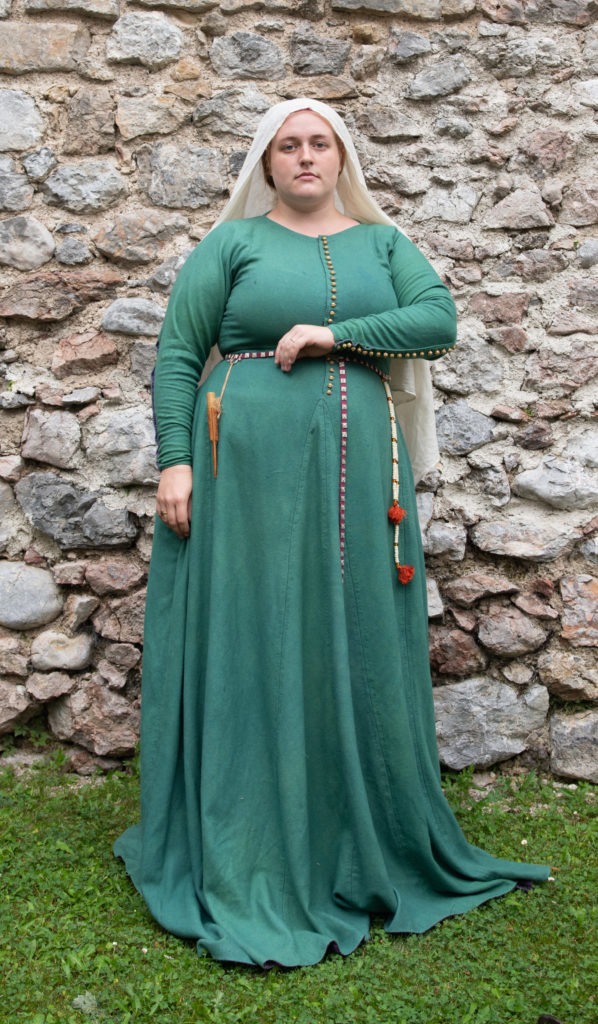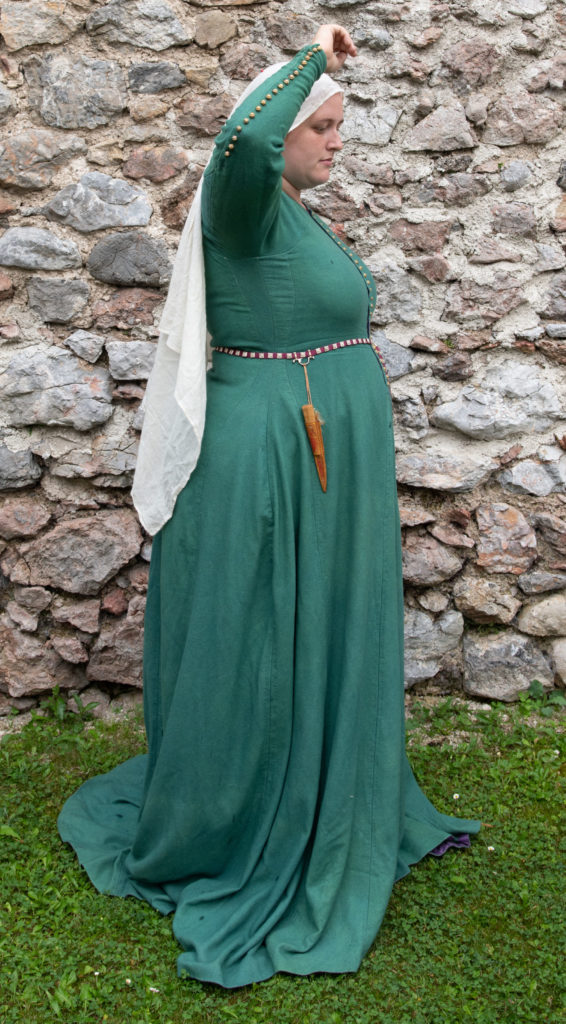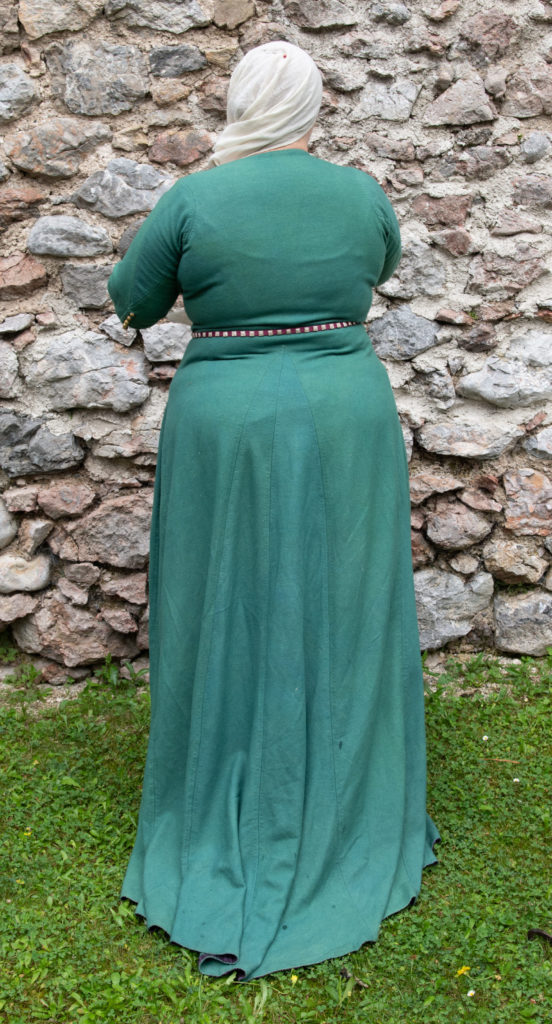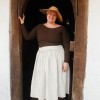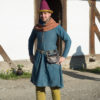The good dress – A buttoned kyrtle from the 1350s
For years I have been wearing my natural coloured, practical wool dresses to do the dirty work on events, I wipe my dirty hands in them and do not have to take care of them a lot except when darning moth holes.
But someday, I said, I wanna be just as pretty as my colleagues and so I have been announcing that I will make myself a citizen’s wife dress very soon…. for years. My colleagues made fun of me whenever I would bring the topic up again. “Yeaaaah, sure, you and the citizen’s wife…” But it bugged me and after having some major hassle with the fabric orders I made for the dress, I could finally start.
Every garment begins with research. So here it is…
Two Lovers from the Concordantiae Caritatis, 1349
Codex 2069 Maria Laach, fol 24v
Klosterneuburger Evangelienwerk, 1340
Graduale cisterciense, Breisgau, Germany, 1340-1350
Gurk Cathedral, 1340 and another time with some buttons
Speculum Humanae Salvationis, Wien, ÖNB cod.s.n.2612, 1330-1340 And again
As you can see on all of these originals, Austria is very far behind in terms of fashion in original pictures while all the regions around us like Italy, Germany and Bohemia were blooming spaces for progressive fashion. The three major illuminated works of mid 14th century Austria, the Concordantiae caritatis from Lilienfeld abbey, the Biblia Pauperum from Klosterneuburg abbey and the Klosterneuburger Evangelienwerk (in Schaffhausen, GER today), are painted in a very conservative style when it comes to women’s fashion, while men’s fashion is pretty progressive showing daggs, buttons, fashionably short kyrtles and tight cut garments. Comparing the fashion progress of originals from 10-20 years prior to 10-20 years after 1350 and textsources as well as sculpture of the time, these three works have clearly left out the progress, that must have been visible in the real world population that was influenced by fashion from all over Europe.
I worked with a very pretty, sea green wool twill from Färbehof, in a double dye from dyers broom and indigo. Through the double dyeing process, the wool was slightly felted already, which is perfect for cleaning the seams on the inside.
I used plant dyed silk for sewing which I bought from Archäotechnik Textile Fläche. For button openings and all edges, I used purple silk fabric, from Färbehof as well.
I decided to make the pattern a very tight fitting one with buttons down to my belly button and up to my ellbow and with a very rich skirt that is almost 4 meters long. For the construction of the pattern, I used the tailored finds from Herjolfsnes as a model and dared to make the armholes a little more profound in order to reach a nicely fitting arm. Here you can see the tailored gores on the sides and the front button facings in which I worked in the tailoring.
Over 60 buttons were used in the dress. The buttons have been custom made for us after the Wiener Neustädter treasury, so they are as regionally accurate as can be.
I attatched them on the button facings which I fastened with a layer of purple silk and made a row of button holes as can be seen in the London finds f.e. or on this somewhat closer find from southern Germany from the 15th century or this one from Estonia.
I also lined the neck and edges with the purple silk which makes for a nice, sharp edge.
I made the dress slightly overlong and with a little train in the back. Since they can be seen in many original pictures and as Heinrich der Teichner tells us, trains and overlong dresses were a wasteful quirk of the Viennese women: “nu dunkcht mich ains peser vil / die grossen säm an chlaidern niden / die solt man hin fuder liden / unn machtz oben für die prust/”
I will need some more accessories to make a convincing citizen’s wife (a pretty knife, pretty shoes brightly coloured stockings, a silken veil, a brooch etc), i only borrowed the stuff you can see on these photos. And I will also need a surcoat very soon in order to show off even more. But I think the dress is already very nice for a well earning crafter’s wife for now.
Mehr lesen:
An article about the 1350s kyrtle in Austria (german only)
Adjusting a pattern for a 1350s kyrtle (german only)
Another kyrtle from the 1350s using a different pattern for the sidegores (german only)
Related Posts
The following posts might interest you as well:

